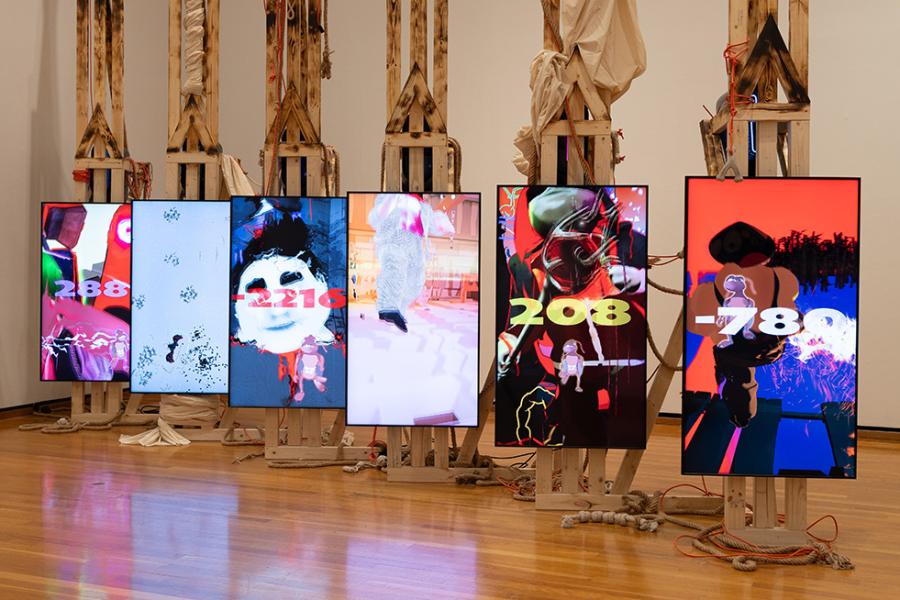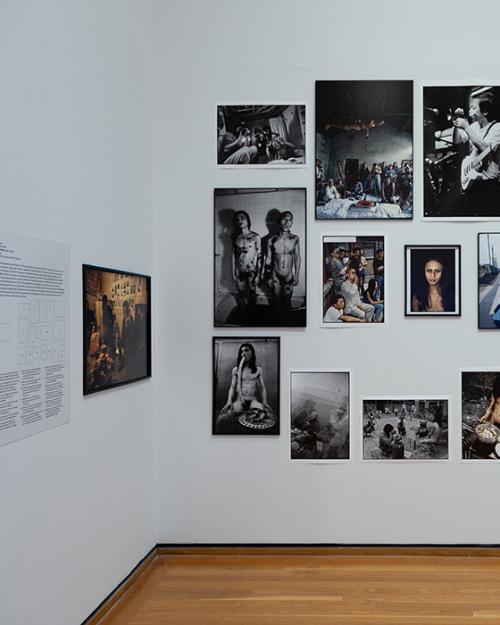A performance art movement emerged in 1990s China, centered in the Beijing neighborhood known as the East Village. In reaction to massive changes in the urban landscape and to everyday living, artists put on one-time performances – but they also filmed and photographed each other, creating a new layer of art, says art historian Nancy P. Lin.
“Performance is an ephemeral artform that’s dependent on and mediated through photography and video. These forms triangulate across each other and depend on each other,” said Lin, Klarman Fellow in the College of Arts and Sciences (A&S), who will be an assistant professor of history of art and visual studies starting in Sept. 2023.
“Between Performance and Documentation: Contemporary Photography and Video from China,” a current exhibit at the Johnson Museum curated by Lin and Ellen Avril, chief curator and the Judith H. Stoikov Curator of Asian Art at the Johnson Museum, explores contemporary Chinese art from the mid 1990s to today.
On Nov. 16-17, a lecture, symposium and live performance by artist Lin Yilin will illuminate questions about the complex relationship between performance, photograph and video posed in the exhibition.
On Nov. 16, starting at 5 p.m., Lin Yilin will perform in the Johnson Museum’s Appel Lobby. Afterward, Wu Hung of the University of Chicago will offer the Stoikov Lecture on Asian art in the Wing Lecture Room.
On Nov. 17, a symposium will be held from 9:30 a.m. – 4:30 p.m. in the Wing Lecture Room, featuring Lin Yilin and other exhibition artists, as well as scholars from Cornell, the University of Chicago, Washburn University and New York University’s Tisch School of the Arts.
Together, Lin said, the symposium, lecture and exhibit examine how the three mediums of photography, video and performance develop over time from the early moments of performance art in China to now.
As an example of early performance art, Lin points out the photo in the “Between Performance and Documentation” exhibit titled “East Village Beijing. 1994. No. 46 (Ma Liuming, Fen-Ma Liuming’s Lunch).”
“It’s a photograph that’s taken by a photographer of another photographer taking a photograph of a performance work,” Lin said. “For me, this photo captures the historical core of this exhibition.”
She noted that the artist RongRong, who took the photo, and Ma Liuming, the performance artist photographed, both male, have gained international recognition while Xing Danwen, the female photographer shown in the photo, has garnered less attention.
“One of the goals of this show is to elevate female artists and to bring them to the fore,” Lin said. “We show several works by Xing Danwen, and her trajectory marks that development of the three mediums coming together over time.”
Another image in the exhibit, “Hiding in the City, Info Wall” by Liu Bolin, complicates the division between performance and documentation, Lin said.
“This is absolutely a performance work, where the artist stands in locations in the city that have social or historical or cultural significance. An assistant meticulously paints on his body so he blends into the urban environment,” Lin said.
But it was also staged in order to be photographed, said Lin; Liu Bolin has chosen a wall in the city where ads for cheap rent are posted, speaking to the precarity of everyday living circumstances of migrant workers looking for cheap housing, as well as their invisibility.
“Hiding in the City, Info Wall” belongs to the Johnson Museum collection, which provided several of the pieces in the show and acquired two sets of works for it. Cornell Library’s Wen Pulin Archive of Chinese Avant-Garde Art yielded footage of performances included in the exhibit.
Another innovative piece in the show, Miao Ying’s “Pilgrimage into Walden XII Project, Chapter I: The Honor of Shepherds,” was supported by the 2019 Cornell Tech \Art Award. Consisting of six computers actively running a machine learning algorithm, the work combines artificial intelligence, performance, video and new media to address the impact of big data, surveillance and technology on forms of social behavior.
“This is literally an AI performance, which pushes the idea of performance in new directions. And it’s a very cool work to see,” Lin said.
Miao Ying is one of the artists displayed in the exhibit who will be on campus for the Nov. 17 symposium.
Lin hopes the exhibition and related events generate new conversations about contemporary China.
“In this heated political environment when we see a standoff between ‘democratic’ America and ‘autocratic’ China, work that looks at cultural forms complicates a black and white picture,” Lin said. “It’s important to this exhibition and to my broader scholarship to prompt people to look closely and let the politics of the artwork emerge from the artwork.”






